A Differential Diagnosis Approach to the Examination and Treatment of the Lumbar Spine and SI Joint
Learn something now! - Watch the Online CEU Course Trailer

All Access Online CEU for PT, PTA and OT for $189
BEST VALUE - Includes this course and all our online courses
Subscribe Todaytheaters Purchase Now, Instant Online Course Access
A Differential Diagnosis Approach to the Examination and Treatment of the Lumbar Spine and SI Joint
$160.00
- CE Hours: 8.5 hrs, .85 CEU
- Delivered: Online
- Instant Online Access, Color 90 Page PDF Manual for Download, 365 days of access, Mobile Ready
- No auto-renewal for this option
All Access Online CEU for PT, PTA and OT
$189
All Access Online CEU for PT, PTA and OT Subscription
1 Year Access with Annual Renewal
State specific course completion certificates.
Chat support
Prices are in US dollars- 12 months of access to all online ceu courses, course tests and state approval certificates.
- Meet all your CE requirements. Pre-approved for PT, PTAs in AK, AL, AZ, CA, CO, CT, DC, DE, GA, HI, IA, ID, IL, IN, KS, MA, ME, MI, MO, MS, MT, NC, ND, NE, NH, NM, NV, NY, OR, PA, RI, SC, SD, TN, TX, UT, VA, VT, WA, WI, and WY.
- AOTA approved.
- Designed for Physical Therapists, Occupational Therapists, Athletic Trainers and Assistants.
- Access to future courses and content.
- Start, stop and resume, right where you left off in a course.
- Real patient interviews.
- Medical expert contributors.
- 3D anatomy and medical illustrations.
- Easy to use learning system for fast access to your courses.
- Award winning content.
- Top instructors teaching evidence based skills and techniques.
Why should a physical therapist, or athletic trainer take this lumbar spine and SI joint dysfunction continuing education course?
Back pain can result from poor biomechanics, a medical condition, or an injury. It can be so debilitating that it leads to loss of quality of life. Opioids are commonly prescribed to manage back pain; however, physical therapists and athletic trainers are skilled in evaluating and treating many underlying conditions that lead to back pain. Treatments can include conditioning, postural strengthening, manual therapy, and performance tasks.
The therapist that takes this course will learn the most current evidence-based information and techniques used in the evaluation and treatment of the SI joint and lumbar spine in order to create optimal individualized treatment programs.
Rehab clinical tools instructed in this lumbar spine and SI joint dysfunction course to enhance your functional outcomes.
- Clinical reasoning skills and clinical prediction concepts for deciding on the treatment options of SI joint and lumbar spine joint dysfunction
- Regional interdependence concepts related to the thoracolumbar junction as well as the hip, and the influences of those regions on the lumbopelvic region and spine
- Special tests from the literature to proven effective in treatment
- Current evidence used in the evaluation and treatment of the sacroiliac joint and lumbar spine
Specific instruction that will enhance your understanding and ability to deliver better patient care.
- Functional weight - bearing and sport-specific activities for stabilization of the lumbar spine and SI Joint
- Lumbar spine and SI joint dysfunction mobilization techniques
Professional Accreditation
This is an intermediate level course applicable for PT, PTA, AT. Physical Therapy Accreditation: For specific state information, use the accreditation verification menu and select your state of license. Athletic Trainers: BOC provider #P2047, category A. This course has not been submitted for Evidence-Based BOC approval.
fact_check Accreditation Verification
Online CEU Course for PT, PTA, OT State Accreditation
Highlights to this Online Continuing Education Courses

Course Objectives
Upon successful completion of this course the participant will be able to- Identify the evidence-based practice as it relates to the evaluation and treatment of the sacroiliac joint and lumbar spine.
- Perform a comprehensive physical examination combining research, clinical expertise and extrapolations of information from previous patient outcomes.
- Evaluate the sacroiliac joint with respect to active movement testing, symmetry and pain provocation.
- Identify the exercises proven by research to provide significant improvement with specific diagnoses of the lumbar spine and sacroiliac joint.
- Identify patients that will benefit from mobilization and stabilization treatment approaches for the sacroiliac joint and lumbar spine.
- Understand clinical prediction rules and how they relate to your physical examination and treatment.
- Utilize Type I and Type II techniques for the lumbar spine.
- Develop a comprehensive treatment program incorporating mobilizations, manipulation, muscle energy techniques and exercises.
Learn from an Expert - Robert Klingman, MPT, OCS, FAAOMPT

Robert Klingman, MPT, OCS, FAAOMPT,received his Bachelor of Science in Exercise Science from California State Polytechnic University in Pomona, CA, his Master’s in Physical Therapy from Mt. St. Mary’s College in Los Angeles, CA and is a graduate of the Orthopaedic Physical Therapy Residency Program at Kaiser Permanente in Los Angeles, CA.
Learn More about Robert KlingmanA Differential Diagnosis Approach to the Examination and Treatment of the Lumbar Spine and SI Joint
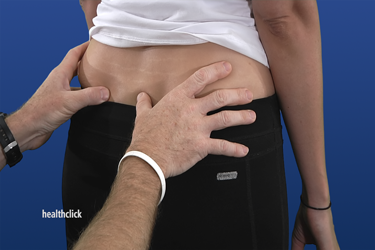
- Current Evidence used in evaluation and treatment of the sacroiliac joint and lumbar spine
- Clinical reasoning-What determines the decisions for treatment
- Physical examination techniques
- Combining the evidence with the clinical expertise
- Modifying based on patients needs
Examination for the SI Joint
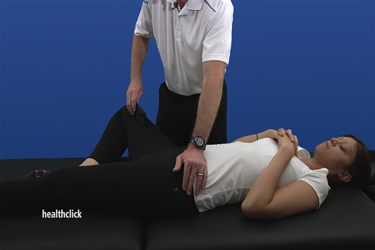
- Movement exam
- Special tests
- Symmetry palpation
- Positional testing
- Positional faults
- Mobility Impairments
- Discussion of the clinical findings
- How to progress the evaluation based on the clinical findings
- Ligament testing
- Ligaments and pain pattern
Treatment of the SI Joint
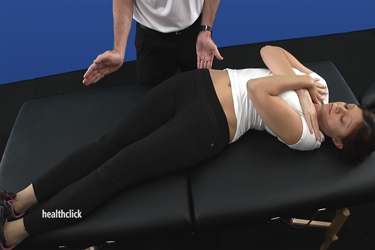
- Lumbar spine and SI joint dsyfunction mobilization techniques
- Manuipulation
- General approach
- Specific techniques
- Isometric mobilizations
- Muscle energy
- Passive movements combined with muscle energy
- Active movements
Examination for the Lumbar Spine
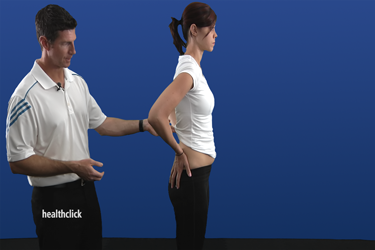
- Active Movement
- Accessory joint mobility
- Pain provocation
- Sagittal plane movements
- Frontal plane movements
- Palpation-passive accessory intervertebral movements “spring testing”
Treatment of the Lumbar Spine

- Type I and II mechanics and techniques
- Manual therapy interventions
- Talking through the progression based on findings and results from treatment techniques
- Treating a patient towards a closing dysfunction
Treatment of the Thoracic Spine
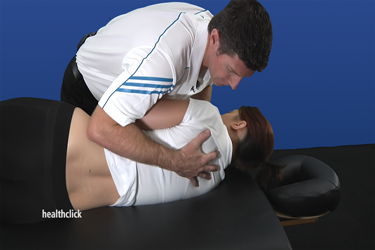
- Discussion of regional interdependence-how does the thoracic spine affect the lumbar area?
- Hypomobility in lower thoracic region
- Rotation component of treatment
Treatment of the Hip Region

- Regional interdependence -how does the hip influence the lumbar spine?
- Internal rotation technique
- Flexion, abduction and external rotation techniques
Summary of the Evaluation and Technique Results
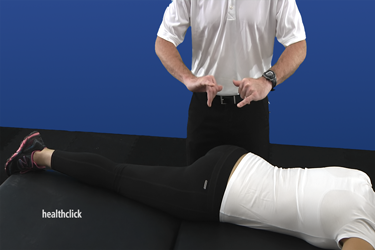
- What have we covered so far and how do we progress?
- Review of techniques, results and progression
- Research that supports usage of lumbar spine stabilization exercises
SI Clinical Prediction Rule
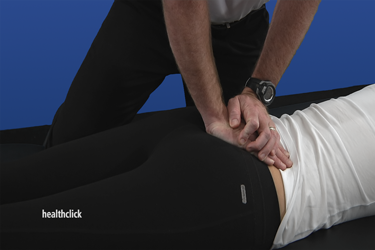
- Description of the clinical prediction rule
- Special tests:
- Distraction
- Gaenslen Test
- Thrust Test
- Compression Test
- Sacral Thrust Test
Treatment to Improve Spinal Stabilization

- Improving stabilization for lumbar spine and SI
- Exercise progressions
- lumbar spine stabilization exercises
Course Test - Evaluate your knowledge

- Use the Healthclick proprietary online education system which provides the online student with:
- Worldwide access to high definition video, anatomical animations and images, and written information
- The highest quality film in the industry, you can see the difference!
- Stop and resume within a course, the Healthclick system will optimize your course based on your device, connection and remembers where you left off.
- Real-time course updates. We are always adding to each courses, updating content, adding animations, these are not static courses!
- Evaluate your knowledge with the course test on any device.
- Print your state course certificate for CE credit.
- Take the online test as many times as need in order to achieve a 70 % or greater score.
Responsible CME® - Online CEU Course Testimonials
67.225.255.111The instructors instruction for the treatment techniques were very precise, clear and easy to follow. The video presentation enhanced his instruction tremendously. It was very easy to understand his instruction to be able to replicate in the clinic setting! Well done! -- Nancy, PT
This course was well organized and very detailed. The videos and demonstrations were clear and easy to follow along. -- Brady, PT
Great, comprehensive material that is accurate with what you will see in the clinic -- Allan, Physical Therapist
This was a clear course on assessment and treatment of SI and lumbar pathologies. -- Andrea, PT
This was the best online course I have ever taken. It was informative and the camera angles for the manual therapy demonstrations were excellent. I would highly recommend this course to any PT. -- Mary, Physical Therapist
Great online course. Information was clearly presented and concise. -- Jessica, PTA
I found the pace of the course helpful- the manner of the instructor was easy to follow and to understand. The videos were excellent. -- Becky, PT
Great class with up to date information and a nice review of MET for SIJ. -- Elyse, PT
Covers a lot or almost all of possible causes of low back pain. -- Judy, Physical Therapist
Course was easy to navigate and questions were very appropriate to information given. Very practical information that can be used clinically immediately. -- Cheri, PT
I really enjoyed the instructor. Very good delivery and easy to understand. -- Debra, PT